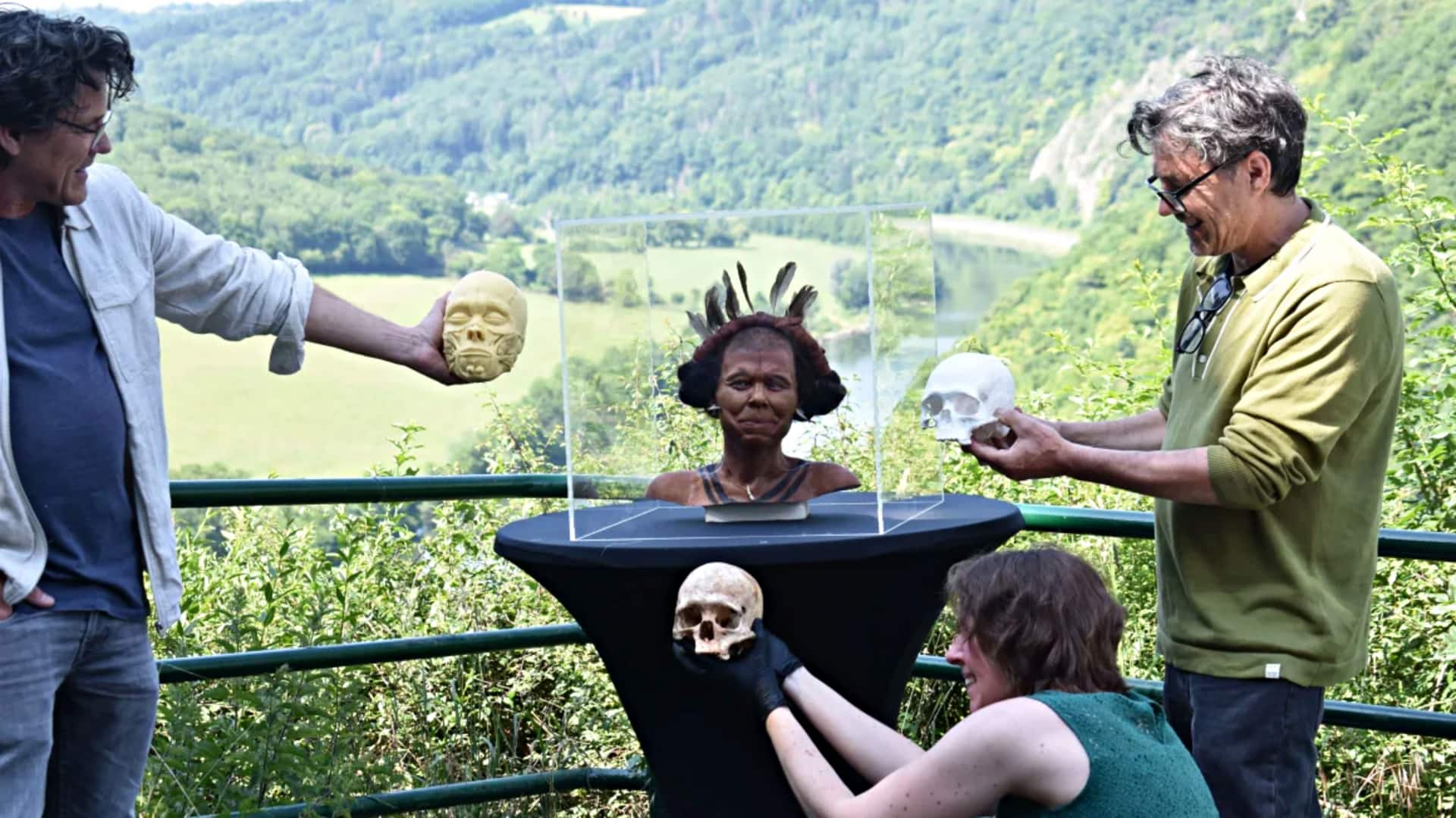
Scientists reconstruct face of woman who lived 10,500 years ago
What's the story
In a groundbreaking study, scientists have reconstructed the face of a prehistoric woman who lived around 10,500 years ago in present-day Belgium. The team from Ghent University conducted the reconstruction using ancient DNA extracted from her remains. The analysis revealed that the woman had blue eyes and slightly lighter skin than most other people from the Mesolithic period in Western Europe, analyzed to date.
Detailed analysis
Woman had strong brow ridges
The reconstruction also provided clues about the woman's age and some of her physical features. Isabelle De Groote, an archaeologist at Ghent University, told CNN that the woman was between 35 and 60 years old. She had a high nasal bridge and strong brow ridges despite being female. These traits were similar to those of Cheddar Man, another prehistoric individual who lived in what is now the UK around the same time.
Burial practices
Unearthed from Margaux cave in Dinant
The woman's remains were discovered in the Margaux cave in Dinant during an archeological dig in 1988-1989. She was buried with eight other women, which is unusual as most Mesolithic burial sites have a mix of men, women, and children. Many skeletons were sprinkled with ochre, indicating ritual or symbolic behavior. This suggests complex burial customs and raises questions about the social structure and cultural practices of this early hunter-gatherer community.
Genetic analysis
Skin color a bit of a surprise
Philippe Crombe, an archaeologist at Ghent University and a member of the project team, said that the ancient woman's skin color was "a bit of a surprise." He noted that all individuals analyzed so far on ancient DNA in Western Europe belonged to the same genetic group. This discovery highlights variability in skin color among different populations during this period.